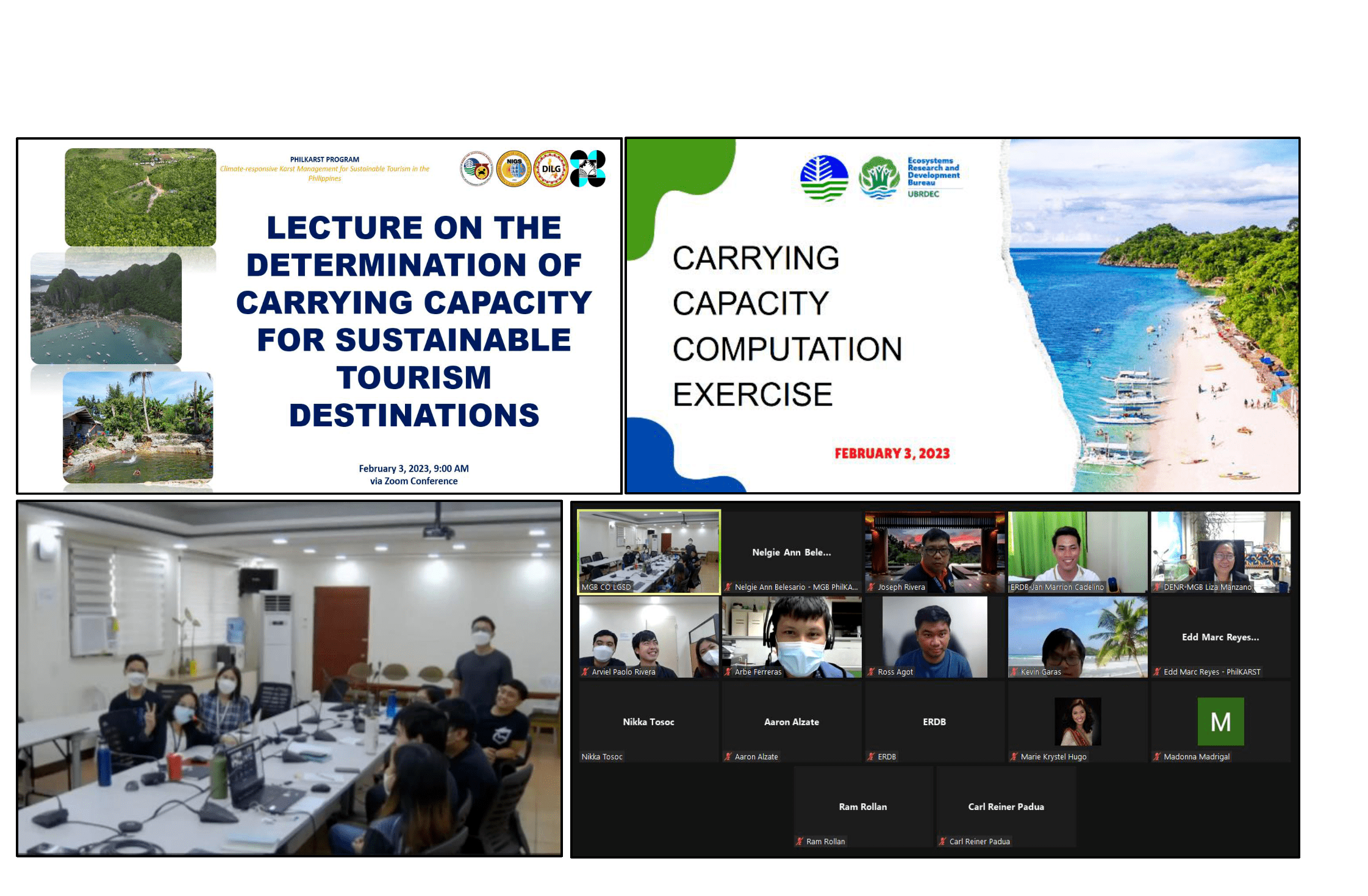On February 3, 2023, the PhilKARST Program under the Lands Geological Survey Division (LGSD) organized an online lecture on the Determination of Carrying Capacity for Sustainable Tourism Destinations via Zoom Conference to aid its personnel in understanding carrying capacity concepts and its computation.
In line with the Program’s objectives to provide a planning tool for the sustainable management of tourist destinations underlain by karst terrain, a discussion on the conceptual framework of carrying capacity and its computation was conducted with Mr. Jan Marrion Cadelino from the Ecosystems Research and Development Bureau-Urban and Biodiversity Research, Development and Extension Center (ERDB-UBRDEC) as the resource speaker.
Carrying capacity is defined as the ability to support healthy organisms while sustaining their productivity, adaptation, and capacity renewal. It also refers to the number of individuals that can be supported in a given area within natural resource limits, and without degrading the natural, social, cultural, and economic environment for present and future generations.
The lecture highlights the importance of physical, biological, and social components when it comes to determining carrying capacity and the four (4) types of Carrying Capacity computations, namely: (1) Tourism Carrying Capacity, (2) Physical Carrying Capacity, (3) Population Carrying Capacity, and (4) Biophysical Assessment in relation to Carrying Capacity. Following the discussions and the differences between each concept, the PhilKARST Program has identified avenues with which it may contribute to the formulation of a Karst Management Plan for its target sites, the Municipalities of El Nido, Palawan, and Del Carmen and General Luna, Surigao del Norte.
The PhilKARST Program will proceed in preparing its Karst Management Plans focused on using physical carrying capacity by adding limiting factors such as extreme weather occurrences and geohazards in its computation.
By: Lands Geological Survey Division

